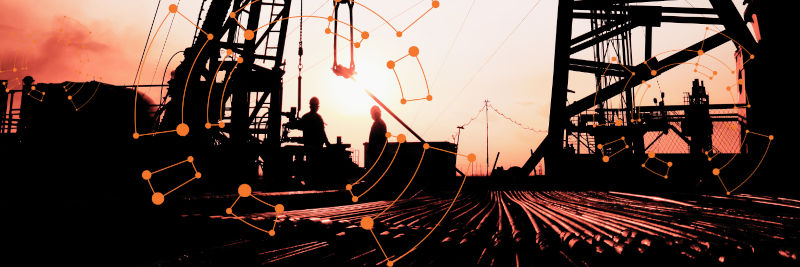
Latin America has the second-largest proven oil reserves in the world behind the Middle East, yet it’s never been known as an oil-producing maverick due to external and internal hindrances, including U.S. sanctions against Venezuela and a regulatory framework in Mexico and elsewhere that tends to dampen competition. All that is about to change.
With geopolitical disruptions wracking the Middle East and Russia, importers looking to diversify their oil supply have set their sights on Latin America — and for good reason. The discovery less than a decade ago of around 11 billion barrels of crude oil reserves off the coast of Guyana made headlines globally, with news coverage reaching a fevered pitch when the oil started gushing into pipelines. The “incredibly short” five-year timespan between discovery in 2015 to full-blown production in 2020 was “unprecedented,” according to Oilprice.com.
The discovery, and the oil-and-gas exploration since then, has huge implications for the global market and for Latin American oil producers. It offers a partial solution to a looming problem: a source of clean, cost-efficient oil, which will be in high demand during the decades-long energy evolution. To stay competitive and claim its stake as part of the solution, Latin America’s existing onshore oil fields, which historically operate well below their production potential, have shifted into high gear to optimize performance, increase operational efficiencies, and reduce greenhouse gas emissions.
There is a challenge, however, faced by many existing producers: aging infrastructure.
Data Within Reach
Aging infrastructure located in harsh, remote environments like the Maracaibo Basin in Venezuela, which is surrounded by mountain ranges and an almost constant veil of overhanging clouds, or the Sureste Basin in Mexico where more than 50% of the basin area is located in a deep-water Campeche slope, are not be built for data at scale.
The challenge of outdated infrastructure lies in leveraging data from the increasing number of sensors at the edge for data collection, storage, analysis, and connectivity across the enterprise.
IIoT devices have long been MacGyvered with twine and duct tape. They use different protocols within decades-old SCADA systems. These disparate systems hurt production potential with two significant barriers: equipment from a variety of vendors along with little or no historical documentation to reveal who or what the modifications were and machine languages that don’t talk “nicely” to one another.
While we don’t have statistics showing the number of aging pipeline networks in Latin America, there is evidence that outdated equipment reduces oil and gas opportunities. In early 2024, the U.S. Energy Information Administration looked at Venezuela’s energy landscape and found that “much of Venezuela’s crude oil production capacity and infrastructure have suffered from a decade-long lack of capital and regular maintenance.”
Yet, replacing a network from scratch is costly – and unnecessary. Retrofitting existing infrastructure makes sense, leads to increasing business value from your operations, and funnels data to key decision-makers throughout the business (yes, even beyond the operations team – more on that in a bit).
To support our worldwide network operator customers, we often team up with in-region trusted distribution and system integrator partners. This helps our customers experience the FreeWave difference – an end-to-end Industrial Internet of Things (IIoT) data solution – with local expertise and ongoing support.
One project we’re working on is based in Peru. The infrastructure is more than 15 years old. Over the years, personnel have changed and there has been no consistent tracking of data and processes. All this has led to knowledge gaps, with questions like:
- What equipment do we have in the field?
- Where can we increase efficiency?
- What data do we have that we don’t access?
- How can data help us reduce costly downtime?
- What data do decision-makers in different parts of our business need?
- How can satellite connectivity improve uptime and data access?
In established oil fields, a rise in IIoT sensors measuring things like temperature, pressure, and flow is generating massive amounts of data. But too often, data generated at the edge remains siloed, beyond the reach of decision-makers. Or, because IIoT devices have been MacGyvered with twine and duct tape and, therefore, use different protocols within decades-old SCADA systems, standard protocols simply don’t communicate well.
Retrofitting aging SCADA infrastructure means leveraging data for better data management, transfer, analysis, and visualization. The solution integrates IIoT sensors, edge computing, cloud analysis for extensive processing of data from different sources, and satellite connectivity.
First, though, comes the convergence conversation.

Unpacking IT/OT Convergence for Better Decision-Making
FreeWave’s end-to-end solution includes the FreeWave® Insights™ data platform, connected devices like our FreeWave Fusion™ platform for edge processing and connectivity, ORBCOMM’s feature-rich satellite terminals, and satellite service plans through our partnership with Viasat. The unmistakable trend we’re seeing from our work in Latin America and other regions is is Information Technology (IT) and Operational Technology (OT) convergence.
In the past, these two areas were worlds apart – and it was understandable. Each had its own agenda. They didn’t play in the sandbox together. Today, they must and can. Oil producers racing to retrofit their infrastructure are recognizing that convergence is essential.
In an article by McKinsey & Company, “While the rationale for converging IT and OT originated years ago, the emergence of IIoT is driving momentum today—particularly IIoT’s need for data from a vast number of sources. Compared with a traditional IT stack, the IIoT-based industrial automation stack adds a new layer for analytics, end-user digital applications, data management, and storage.” An operation and IT alliance amps up computational power in the cloud and gives a clearer insight to more users.
FreeWave is closing the IT/OT gap for oil producers in Latin America that have aging infrastructure needing to get data from sensors and machines in the field, converting that data through our platform and delivering it via a single pane of glass – a user interface that provides uninterrupted visualization of data to real people, alerts, and alarms that enable data-driven decision at the point of decision-making.
While technology has evolved, OT has always been a big part of our backstory at FreeWave. We’ve been making the most rugged radios on the planet for more than 30 years (oftentimes operating in lonely, hard-to-reach places – both sub zero or scorching hot temperatures is an average day in the office for us). OT has its own language, machines, and devices with protocols like Modbus, DNP3 and MQTT. In contrast, IT protocol has a different vernacular: IP, Ethernet, TCP and so on.
The thing to know: you want data delivered in a protocol that is useful for other systems to ingest whether that means MQTT, webhooks, or APIs. When you see and act on data – data that makes sense for all users – you improve decision-making across an enterprise.
(Way) Beyond the Operations Team
Because oil and gas operate in remote locations, it might take more than half a day for engineers or service teams to reach a production field – by road or air. Regular site visits become costly – and risky.
In the race to retrofit existing infrastructure, producers have an opportunity to go beyond the operations team and get data into the hands of decision-makers in other areas of the business:
- Supply chain managers to better plan for lead times
- Maintenance engineers to assess historical and real-time data to extend asset life, reduce maintenance, and mitigate downtime
- Insurance managers to reduce risk, improve safety, and reduce premiums
- C-level executives to see production levels in real-time
- A chief sustainability officer to gauge environmental impact
Why Connecting to Satellite Makes Sense in Latin America
Data at the edge is on the rise for other remote industries besides oil and gas, including mineral mining, agriculture and environmental monitoring (like volcanoes and weather stations). And while majestic mountain ranges and soaring conifers define Latin America’s beautiful landscape, these obstructions disrupt connectivity for remote industries. Until now, options were limited.
Satellite, with its smaller footprint and affordable costs, allows data to flow consistently and securely no matter the number of mountains or extreme weather. IIoT devices, satellite and FreeWave’s Insights data platform, a Platform as a Service (PaaS) that is protocol agnostic, are, in a sense, a three-legged stool. The trio provides visuals, customizable reports, alarms and alert notifications to people about what’s really happening in the field with uninterrupted visibility to data and real-time monitoring – even if the infrastructure was built long before ChatGPT was a thing and a worldwide pandemic was found only in sci-fi novels.
Yes, the world has changed. And remote operators with aging infrastructure have an opportunity to change with it. By leveraging satellite-enabled IIoT solutions, organizations can overcome the limitations of terrestrial networks and achieve greater reliability and stability in their operations.
Today’s oil operators in Latin America – and elsewhere – are doing more with less using satellite-enabled IIoT infrastructure upgrades. From North America to Latin America to the Middle East, satellite, IIoT, and a secure end-to-end PaaS are “freeing” data from the edge for better enterprise-wide decision-making, greater performance management, compliance automation, and greater uptime. The race to retrofit is on.
FreeWave provides a complete plug-and-play satellite solution from edge to visualization of SCADA-ready protocol that works out of the box! Join FreeWave’s satellite solutions proof of concept program today. Check it out here.

FreeWave Technologies is leading the way for data-driven decision making helping remote IoT network operators do more with their data when and where they need it.




